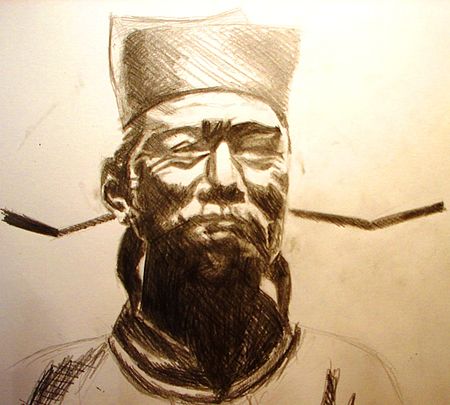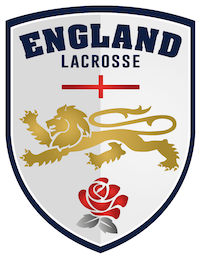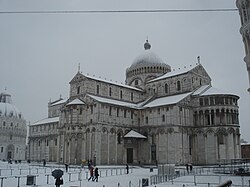Republic of Pisa
| |||||||||||||||||||||||||||||||||||||||||||||||||||||||||||||||||
Read other articles:

Shen Kuo沈括Penggambaran Shen Kuo yang dibuat oleh artis modernLahir1031QiantangMeninggal1095RunzhouTempat tinggalHangzhou, Xiamen, Kaifeng, ZhenjiangDikenal atasGeomorfologi, Perubahan iklim, Refraksi atmosfer, Utara sesungguhnya, Retrogradasi, Camera obscura, Peta relief terangkat, perbaikan posisi bintang kutub, perbaikan kesalahan bulan dan matahariKarier ilmiahBidangGeologi, Astronomi, Arkeologi, Matematika, Farmakologi, Magnetisme, Optik, Hidrolik, Metafisika, Meteorologi, Klimatologi, G…

此條目介紹的是拉丁字母中的第2个字母。关于其他用法,请见「B (消歧义)」。 提示:此条目页的主题不是希腊字母Β、西里尔字母В、Б、Ъ、Ь或德语字母ẞ、ß。 BB b(见下)用法書寫系統拉丁字母英文字母ISO基本拉丁字母(英语:ISO basic Latin alphabet)类型全音素文字相关所属語言拉丁语读音方法 [b][p][ɓ](适应变体)Unicode编码U+0042, U+0062字母顺位2数值 2歷史發展…

Pont d'Iéna Pont d'Iéna adalah jembatan Paris di atas Sungai Seine yang menghubungkan Arondisemen ke-7 ke arondisemen ke-16. Itu terdaftar sebagai monumen bersejarah pada tahun 1975[1] dan pada tahun 1999 dimasukkan dalam penetapan batas wilayah Riberas del Seine, di Paris, dinyatakan sebagai Situs Warisan Dunia oleh Unesco.[2] Adalah Napoleon Bonaparte yang pada tanggal 14 Oktober 1806 memutuskan untuk membangun jembatan tersebut, menempatkannya tepat di depan École militaire…

Liquid mixture of higher alkanes from a mineral source, particularly a distillate of petroleum Not to be confused with Mineral spirit. For crude oil found in geological deposits, see Petroleum. Bottle of mineral oil as sold in the U.S. Mineral oil is any of various colorless, odorless, light mixtures of higher alkanes from a mineral source, particularly a distillate of petroleum,[1] as distinct from usually edible vegetable oils. The name 'mineral oil' by itself is imprecise, having been…

Georgian crescent in Bath, Somerset For the residential development in Brighton, see Royal Crescent, Brighton. For the residential development in Holland Park, London, see Royal Crescent, London. Royal CrescentRoyal Crescent from a hot air balloon, contrasting its uniform public front façade against its more architecturally varied private rear.LocationBath, Somerset, EnglandCoordinates51°23′13″N 2°22′06″W / 51.38694°N 2.36833°W / 51.38694; -2.36833Built1767�…

Coto makassar dengan ketupat Coto makassar dengan ketupat daun nipah Coto makassar atau Pallu coto mangkasarak adalah hidangan tradisional Suku Bugis atau Suku Makassar, Sulawesi Selatan.[1] Makanan ini terbuat dari jeroan sapi yang direbus dalam waktu yang lama. Rebusan jeroan bercampur daging sapi ini kemudian diiris-iris, lalu dibumbui dengan bumbu yang diracik secara khusus. Biasanya, Coto makassar dihidangkan dalam mangkuk dan dinikmati dengan ketupat dari daun kelapa dan burasa, ya…

Historic siteThe Drum, EdinburghEntrance front of The DrumCoordinates55°54′30″N 3°07′12″W / 55.9084°N 3.1201°W / 55.9084; -3.1201Built1726–1734Built forJohn Somerville, 13th Lord SomervilleArchitectWilliam Adam Listed Building – Category ADesignated14 July 1966Reference no.LB28052 Inventory of Gardens and Designed Landscapes in ScotlandDesignated1 July 1987Reference no.GDL00356 Location in Edinburgh council area The Drum, driveway The Drum is an …

Kharkiv (uk) Харків Héraldique Drapeau Vue panoramique du quartier central de Kharkiv. Administration Pays Ukraine Oblast Oblast de Kharkiv Maire Ihor Terekhov Code postal 61001 — 61499 Indicatif tél. +380 57 Démographie Population 1 421 125 hab. (2022) Densité 4 644 hab./km2 Géographie Coordonnées 49° 59′ 33″ nord, 36° 13′ 52″ est Altitude 152 m Superficie 30 600 ha = 306 km2 Diver…

Ini adalah nama Batak Toba, marganya adalah Lumbantobing. Pantas Maruba LumbantobingPantas sebagai Wakil Wali Kota Sibolga Wakil Wali Kota Sibolga ke-5PetahanaMulai menjabat 26 Februari 2021PresidenJoko WidodoGubernurEdy RahmayadiWali KotaJamaluddin PohanPendahuluEdi Polo SitanggangPenggantiPetahanaAnggota DPRD Kota SibolgaPetahanaMulai menjabat 2009-2019 Informasi pribadiLahirPantas Maruba Lumbantobing29 Maret 1977 (umur 47)Kota Sibolga, Sumatera Utara, IndonesiaKewarganegaraan…

この項目には、一部のコンピュータや閲覧ソフトで表示できない文字が含まれています(詳細)。 数字の大字(だいじ)は、漢数字の一種。通常用いる単純な字形の漢数字(小字)の代わりに同じ音の別の漢字を用いるものである。 概要 壱万円日本銀行券(「壱」が大字) 弐千円日本銀行券(「弐」が大字) 漢数字には「一」「二」「三」と続く小字と、「壱」「弐」…

此條目可参照英語維基百科相應條目来扩充。 (2021年5月6日)若您熟悉来源语言和主题,请协助参考外语维基百科扩充条目。请勿直接提交机械翻译,也不要翻译不可靠、低品质内容。依版权协议,译文需在编辑摘要注明来源,或于讨论页顶部标记{{Translated page}}标签。 约翰斯顿环礁Kalama Atoll 美國本土外小島嶼 Johnston Atoll 旗幟颂歌:《星條旗》The Star-Spangled Banner約翰斯頓環礁地�…
周處除三害The Pig, The Snake and The Pigeon正式版海報基本资料导演黃精甫监制李烈黃江豐動作指導洪昰顥编剧黃精甫主演阮經天袁富華陳以文王淨李李仁謝瓊煖配乐盧律銘林孝親林思妤保卜摄影王金城剪辑黃精甫林雍益制片商一種態度電影股份有限公司片长134分鐘产地 臺灣语言國語粵語台語上映及发行上映日期 2023年10月6日 (2023-10-06)(台灣) 2023年11月2日 (2023-11-02)(香港、…

Kartu bisnis Rod Brock Seattle Computer Products (SCP) adalah sebuah perusahaan perangkat keras mikrokomputer yang berpusat di Seattle, Washington yang merupakan salah satu pembuat pertama sistem komputer berdasarkan prosesor Intel 8086 16-bit.[1] SCP mulai mengirimkan papan CPU 8086 bus S-100-nya ke para pelanggan bulan November 1979,[2] sekitar 21 bulan sebelum IBM memperkenalkan Personal Computer-nya yang didasarkan pada 8088 yang lebih lambat dan memperkenalkan bus ISA 8-bit.…

سودوإفيدرين سودوإفيدرين الاسم النظامي (S,S)-2-methylamino-1-phenylpropan-1-ol تداخل دوائي إيزوكاربوكسازيد، وفينيلزين، وبروكاربازين، و(±)-دبرينيل [لغات أخرى]، وترانيلسيبرومين، وموكلوبيميد، وفينيلزين، ولنزوليد، ولنزوليد، ولنزوليد، ولنزوليد، و…

本條目存在以下問題,請協助改善本條目或在討論頁針對議題發表看法。 此條目需要編修,以確保文法、用詞、语气、格式、標點等使用恰当。 (2013年8月6日)請按照校對指引,幫助编辑這個條目。(幫助、討論) 此條目剧情、虛構用語或人物介紹过长过细,需清理无关故事主轴的细节、用語和角色介紹。 (2020年10月6日)劇情、用語和人物介紹都只是用於了解故事主軸,輔助讀�…

Keuskupan UijeongbuDioecesis Uiiongbuensis의정부시Katolik Katedral UijeongbuLokasiNegara Korea SelatanWilayahGyeonggiProvinsi gerejawiSeoulStatistikLuas2.626 km2 (1.014 sq mi)Populasi- Total- Katolik(per 2010)2.644.000235,504 (8.9%)Paroki66InformasiDenominasiKatolik RomaRitusRitus RomaPendirian24 Juni 2004KatedralKatedral Hati Kudus Maria di UijeongbuKepemimpinan kiniPausFransiskusUskupPeter Lee Ki-heon (이기헌 베드로)Uskup agungAndrew Yeom Soo-j…

This article needs additional citations for verification. Please help improve this article by adding citations to reliable sources. Unsourced material may be challenged and removed.Find sources: England Lacrosse – news · newspapers · books · scholar · JSTOR (February 2017) (Learn how and when to remove this message) England LacrosseSportLacrosseJurisdictionEnglandFounded1892 (1892)AffiliationWorld Lacrosse, ELFHeadquartersManchester, United KingdomCh…

Dialect of the Haryanvi language Not to be confused with Rangri dialect (Malvi). RangriرنگھریNative toPakistanRegionPunjabEthnicityRanghar (Muhajirs)Language familyIndo-European Indo-IranianIndo-AryanCentral zoneWestern HindiHaryanviRangriWriting systemArabic script[citation needed]Language codesISO 639-3–Glottologhary1238 Rangri (also spelt Ranghri) is a dialect of the Haryanvi language[1] spoken by Ranghar Muhajirs in Pakistani Punjab and small areas in Sindh.[…

Circles whose tangent lines at the points of intersection are perpendicular This article includes a list of references, related reading, or external links, but its sources remain unclear because it lacks inline citations. Please help improve this article by introducing more precise citations. (May 2024) (Learn how and when to remove this message) Three mutually orthogonal circles In geometry, two circles are said to be orthogonal if their respective tangent lines at the points of intersection ar…

Zhongguo Renmin Jiefangjun Lujun(ZH) 中国人民解放军陆军trad. Forze di terra dell'Esercito Popolare di Liberazione Emblema delle Forze terrestri della Repubblica Popolare Cinese Descrizione generaleAttiva1927 - oggi Nazione Cina Servizio Partito Comunista Cinese TipoEsercito RuoloGuerra terrestre Dimensione975.000 attivi (st.) nel 2020[1] Stato MaggiorePechino ColoriRosso MarciaInno militare dell'Esercito Popolare di Liberazione Battaglie/guerreGuerra civile cineseSeconda gu…









